About shrimp health
Table of contents
- Behavior of healthy shrimp
- Appearance of healthy shrimps
- The carapace
- Antennae and limbs
- Internal discoloration
- The moult ring
- Appendages and attachments
Healthy shrimp are happy shrimp - in the aquarium and especially when buying new animals you don't want to introduce anything, so it is important to know what a healthy shrimp looks like and how it behaves. In a pinch, you'll have to use a magnifying glass if you want to know for sure.
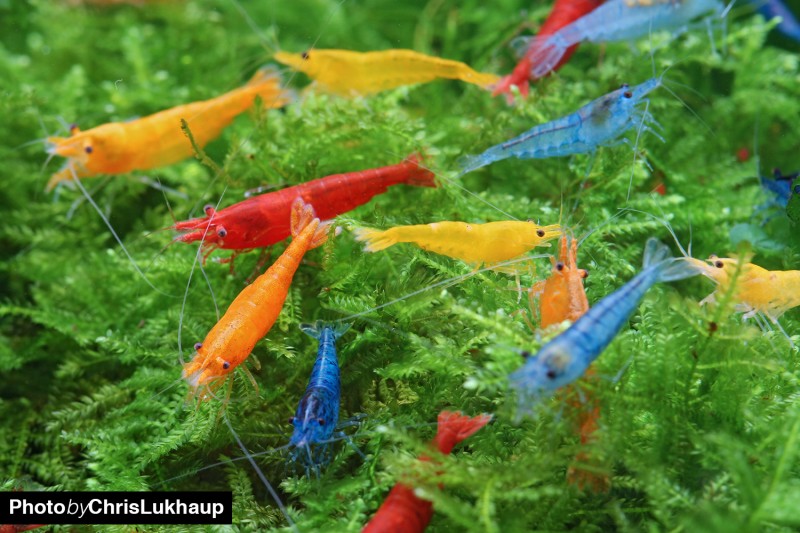
Behavior of healthy shrimp
A healthy shrimp is agile and lively. It piddles with its scissor legs and constantly searches for food, which it leads to its mouth opening. Healthy shrimp crawl around lively and swim relaxed in the water. During a mating swim, the males are much more lively and buzz around looking for a female shrimp, but they are not frantic even when doing so.
Warning signals are, for example, when the shrimp sit around apathetically - not to be confused with the resting phase, when the animals sleep. The resting phases can be recognized by the fact that individual shrimp sit quietly and crawl off again after some time. If all shrimp sit apathetically and do not move their legs, this is definitely an alarm sign.
Hectic swimming around is also not a good sign. Also, if the shrimp suddenly shoot upward and then trundle down as if lifeless, this is a sign of serious problems. These symptoms indicate poisoning - an immediate really large water change and the addition of a water conditioner like Salty Shrimp Easy Filter Powder will help. Then the reason for the poisoning must be found - often the problem lies in freshly purchased and immediately used aquarium plants from conventional cultivation.
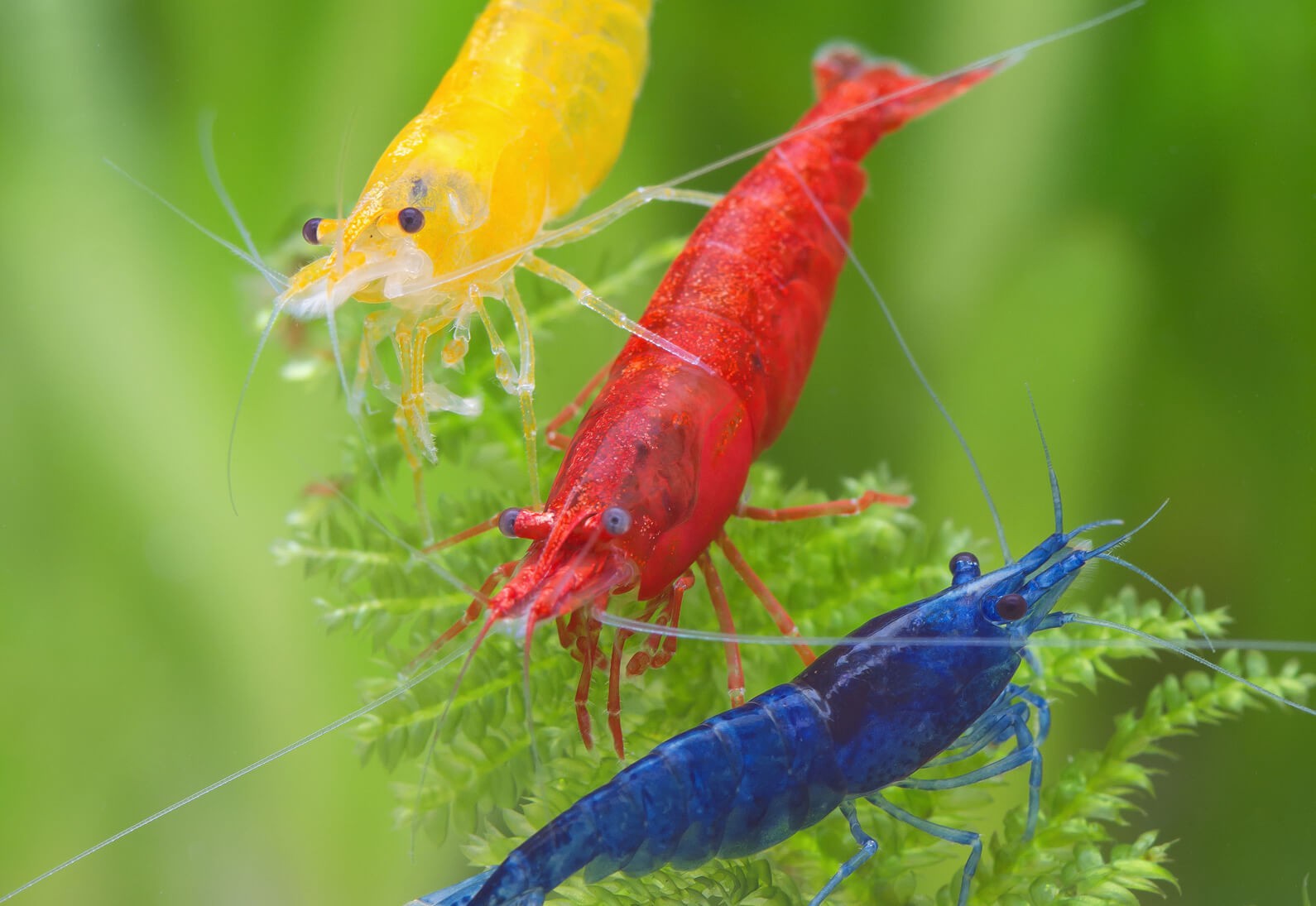
Appearance of healthy shrimp
The carapace
A healthy shrimp does not have rusty brown to dark brown, slightly sunken asymmetrical spots on the carapace, which are signs of a local infection of the carapace with fungi and/or bacteria - the so-called rust spot disease. Treatment and prevention can be achieved by good water hygiene and the addition of humic substances to the water.
Also pink to brown discolored areas on the carapace, from which whitish downy threads grow out, are not a good sign - this is a fungal infection, which often leads to the death of the shrimp.
The carapace lies smoothly all over the body of a healthy shrimp. Protruding parts of the carapace and translucent scraps of old skin may indicate molting problems and an animal weakened by stress.

Antennae and limbs
A healthy shrimp has a pair of long antennae on top and a pair of slightly shorter antennae on the bottom, which it can move well and freely. Broken or noticeably short antenna e may be a sign of bacterial infection. Missing legs can also be a sign of infection. However, antennae and legs can also be partially or completely lost during a molt, accident, or attack by predators such as fish. Therefore, missing limbs in particular are not necessarily a sign of bacterial infection.
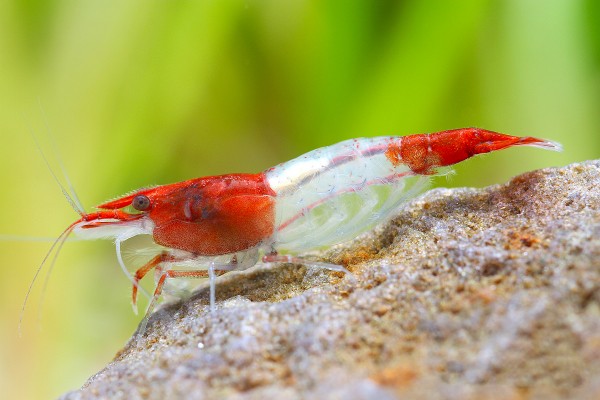
Internal discoloration
In non-opaque colored shrimp such as White Pearls or Yellow Fire, Blue Jelly or Red Rili, the body should be transparent inside and not whitish in color. Especially the muscle tissue in the abdomen can be affected here.
A slightly whitish discoloration is usually due to a lack of oxygen and occurs when the gills are impaired in their function during an infection. It can also be observed shortly before a moult - the gills are skinned and therefore the oxygen supply is briefly interrupted, or if the shrimp is sitting in water with very little oxygen. Here an oxydator or an oxygen bubbler in the aquarium can support well.
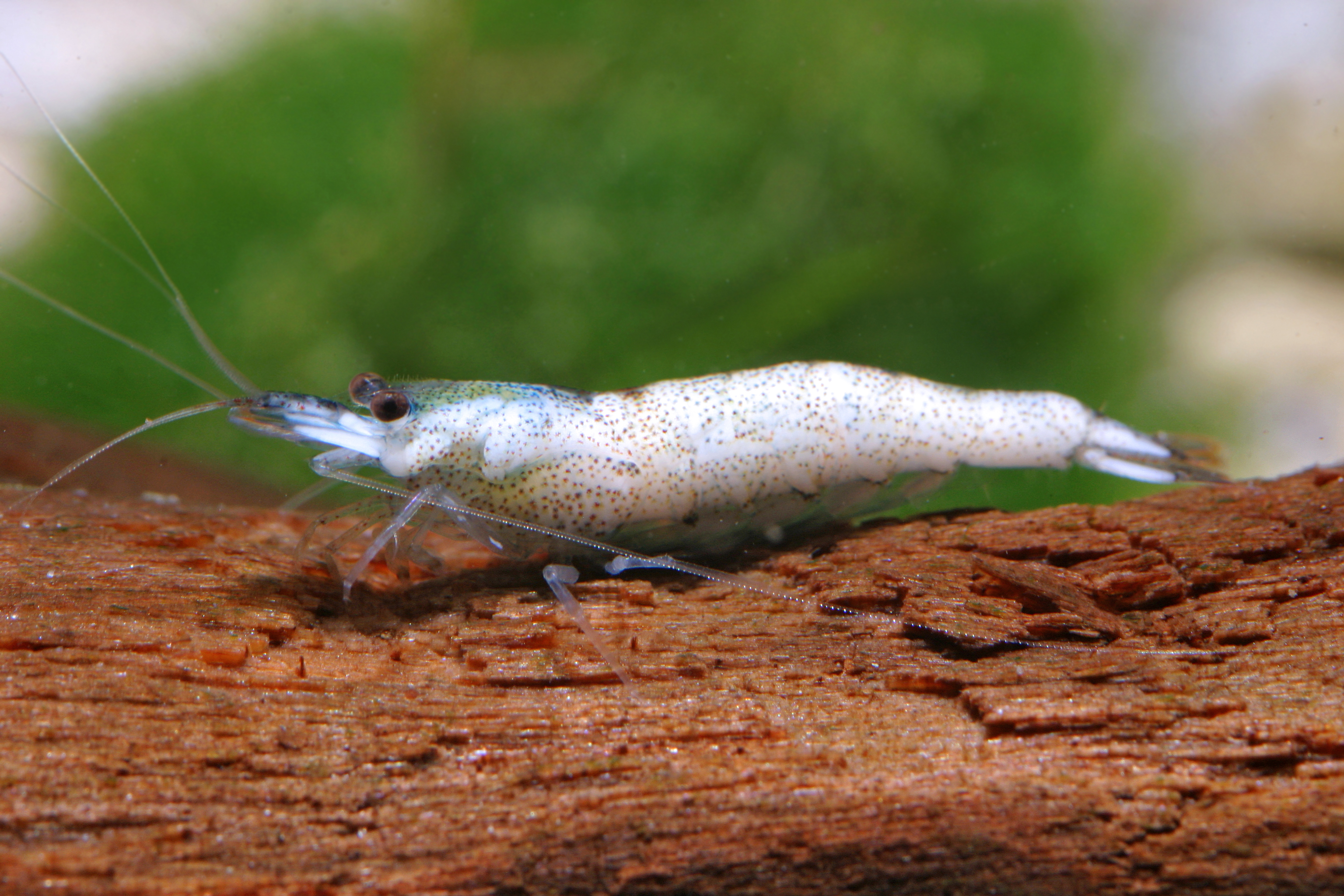
A strong white, almost opaque discoloration indicates muscle necrosis, i.e. dying muscle tissue and is definitely an alarm signal.
If the internal organs in the head/chest area behind the eyes of transparent shrimp are discolored pink or orange, this indicates an internal infection with inflammation. Normally, the internal organs of a shrimp are yellowish to brownish. In the case of the stomach and intestines, it depends on what color the food was that was eaten just before.
For bacterial infections of all kinds, frequent water changes, the addition of humic substances to the water, a good, high-quality and varied, but sparing feeding and supportive feeding of fennel greens, sea almond leaves, walnut leaves or other antibacterial natural remedies will help.
The moulting ring
If it is approaching a molt, shrimp will often show a thin gap between the head thoracic carapace and the abdomen. In shrimp with molting problems, on the other hand, this gap is greatly widened (up to about 2 mm), and you can clearly see the tissue inside the shrimp. This molting ring is also known as the "ring of death" or "ring of death". Usually these animals manage the moult only in exceptional cases without any problems. A ring of death occurs, for example, when the animal has grown too fast and therefore its skin splits open before it can shed its skin.
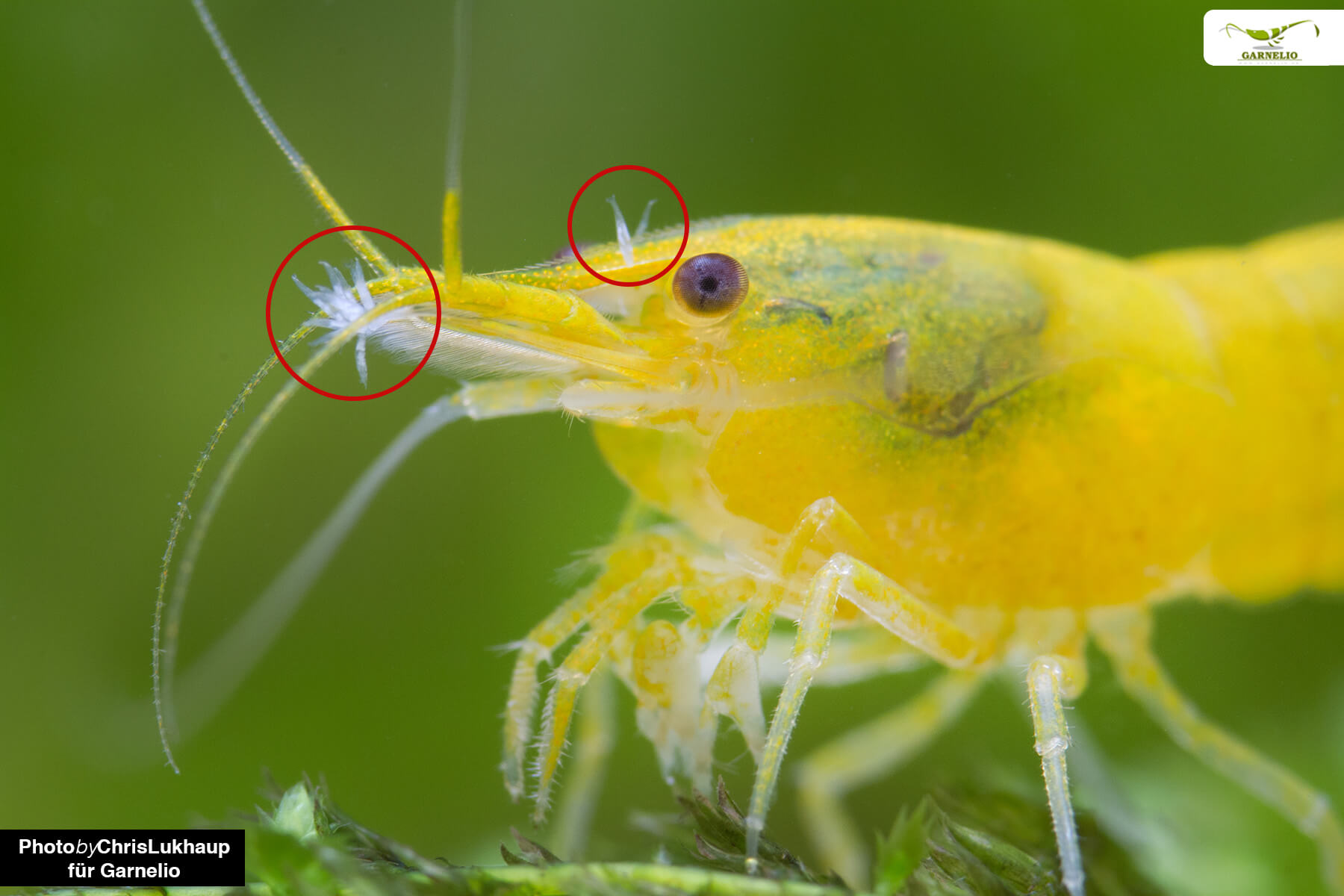
Appendages and attachments
Shrimp can carry various appendages, including sucker worms (see our detailed blog "Sucker Worms in Shrimp"), which can be seen as white dots in the gill chamber or as bright rods on the rostrum (the "nose") of the shrimp. You can read about the best way to deal with sucker worms in the blog linked above.
Sucking worms can't really be considered a disease - most species are harmless harborers and don't harm the shrimp, on the contrary, they even clean the carapace from microorganisms. Unfortunately, the rarely occurring parasitic species cannot be distinguished from the harmless worms.
Bellworms also like to sit on the shrimp carapace. They can be recognized as light fluff. Bellworms do not damage the shrimp shell and are therefore not considered a sign of disease, but they are a sign of a high bacterial load in the water. If the bacterial load is reduced, for example by frequent water changes, adapted feeding and the addition of humic substances, the bell-shaped animals will disappear on their own.

In contrast, parasitic algae can cause real problems. Previously misdiagnosed as "systemic mycosis", it has recently been discovered that an infestation of these organisms is an algae that invades the shrimp's tissues and lives on its blood. The yellow-green to toxic green fuzzy looking spore containers sit between the swimming legs of the shrimp. Female shrimp infested in this way no longer lay eggs. The algae can be controlled by special feeding and by adding humic substances to the water.
If the eggs of a pregnant female are not smooth and round, but look fluffy and have a light cotton wool-like fuzz, they are fungal and will not develop. Usually, female shrimp will discard such a clutch and bear no further damage. Humic substances in the water can also help here.
